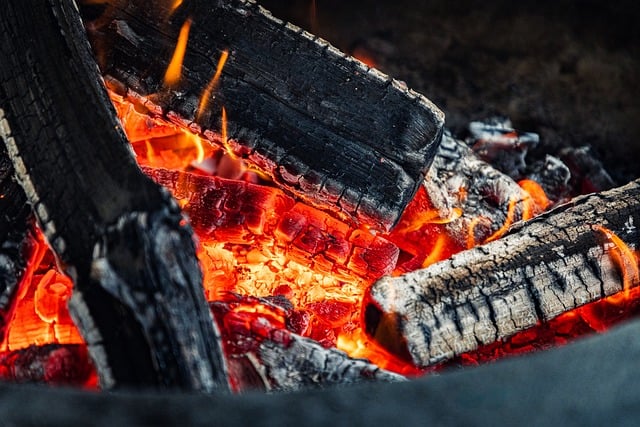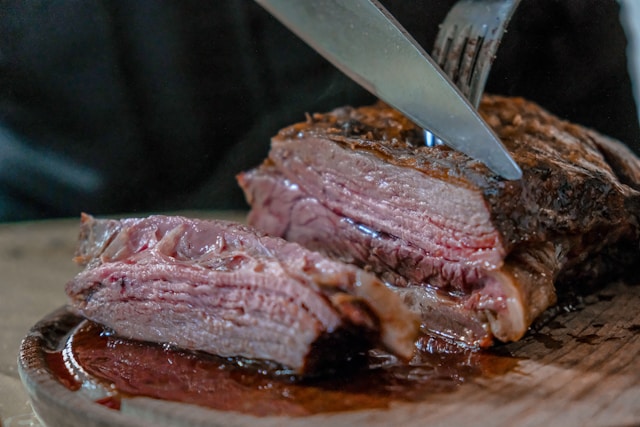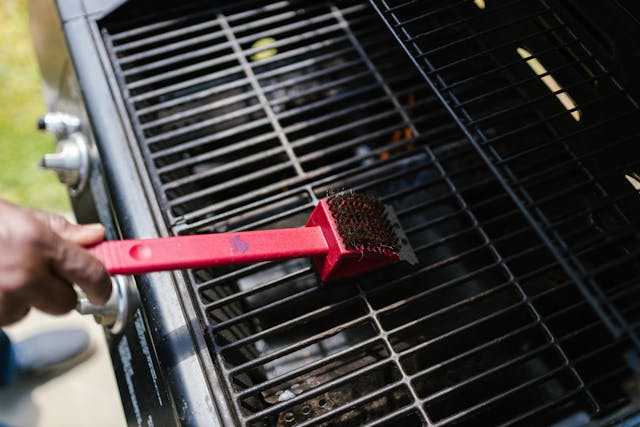Best 3 types Of Fuel Sources for Offset Smokers
Choosing the right fuel source for your offset smoker is crucial for maintaining steady heat and achieving the best smoke flavor. The three best fuel types—lump charcoal, briquettes, and hardwood splits—each offer unique advantages. Lump charcoal burns hot and clean, briquettes provide consistent heat, and hardwood logs deliver authentic smoke flavor. Understanding how to use these fuels effectively can help you enhance your BBQ results while avoiding temperature fluctuations and inefficiencies. Let’s explore the top three fuel sources to help you make the best choice for your offset smoker!
Types of Fuel
Fuel sources for Offset smokers can use various fuel types, each contributing different flavors:
- Wood: Traditional offset smoking often uses hardwood logs, such as hickory, oak, or cherry. Each wood type imparts a unique flavor profile.
- Charcoal: Lump charcoal is a popular choice as it burns hotter and cleaner than briquettes, making it ideal for maintaining high temperatures.
- Pellets: Some smokers are designed to use wood pellets, which provide a convenient and consistent heat source.
Choosing the Right Wood
The choice of wood is critical in offset smoking.
- Hickory: offers a strong, bold flavor that works well with beef and pork.
- Mesquite: Very strong and can overpower delicate meats; best used in moderation.
- Applewood: A milder fruitwood that pairs excellently with poultry and pork.
- Cherry Wood: Provides a sweet, fruity flavor and gives meats a beautiful reddish color.

Mixing Fuels
For those looking to create unique flavor profiles, mixing different types of wood can enhance your smoking experience. Start with a base of charcoal for consistent heat and add chunks of flavored wood.
How to Season Your Offset Smoker
Before using your offset smoker for the first time, it’s essential to season it. This process helps to eliminate any manufacturing residues and creates a protective layer inside the smoker.
4 Best Steps to Season Your Smoker
- Clean the Interior: Remove any debris from the cooking chamber and firebox.
- Apply Oil: Use a neutral oil (like vegetable or grapeseed) to coat the interior surfaces, including grates.
- Heat the smoker: Preheat it to around 275°F (135°C) and allow it to run for a few hours. This process allows the oil to bake into the metal.
- Monitor Smoke: During seasoning, expect to see some smoke as the oil burns off. This is normal.

Smoking Techniques
Managing Temperature
Temperature control is crucial for successful smoking. Here are some tips:
- Use Vents Wisely: Open the intake vent to increase airflow, which raises the temperature. Closing it will lower the temperature.
- Maintain Consistent Heat: Aim for a steady cooking temperature between 225°F and 250°F (107°C to 121°C) for most smoking applications.
Creating a Two-Zone Fire
For added versatility, create a two-zone fire by placing coals on one side of the firebox. This allows for both direct and indirect cooking, giving you more options when preparing different types of food.
Smoke Management
Managing the amount of smoke is key to achieving the desired flavor. Too much smoke can lead to bitter-tasting meat.
- Avoid Overloading the Firebox: Add wood gradually to maintain a steady smoke level.
- Look for Thin Blue Smoke: This is the ideal smoke color for cooking. Thick white smoke can be a sign of incomplete combustion, leading to unwanted flavors.
conclution
Choosing the right fuel source for your offset smoker is key to achieving the perfect balance of heat, smoke, and flavor. Whether you prefer the clean burn of lump charcoal, the steady heat of briquettes, or the rich, smoky aroma of hardwood, each fuel type has its own advantages. By understanding their characteristics and how they interact, you can avoid temperature fluctuations, enhance efficiency, and create mouthwatering BBQ every time. Experiment with different combinations to find the best fuel mix for your smoking style!






